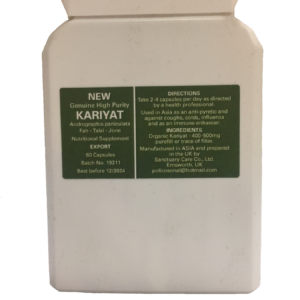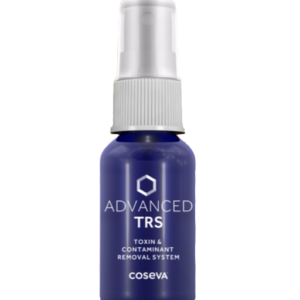- Cre8-Health.com By Dr. Todd Watts and Dr. Jay Davidson
- ·
- 03/03/2020
Your long list of health issues might have you searching high and low for answers. Seemingly separate problems could boil down to one primary source — chronic Lyme disease.
It has many vague, inconsistent, and hidden symptoms. What’s more, it can mimic illnesses like arthritis and chronic fatigue syndrome. And, testing can be unreliable.
Due to this, about half of people with Lyme aren’t diagnosed. If you don’t know the true source of your health issues, you may never recover. (1)
Here’s a closer look at what chronic Lyme disease is, including its symptoms and treatment. You’ll also learn fancy words like Borrelia burgdorferi and erythema migrans.
What’s Chronic Lyme Disease?
Lyme disease is caused by Borrelia burgdorferi and other closely related species of bacteria. The infection is commonly contracted through a tick sting. (Most people think it’s a bite, but technically it’s a sting.) You may not even notice the sting. (2)
Within the first few days to weeks of the infection, you may develop an erythema migrans rash. It’s generally red and circular. Sometimes it has a bull’s-eye pattern. Though it’s a major sign of acute Lyme disease, many infected people don’t get the rash. (3)
During this early stage, it can seem like you have the flu. You may have aches, pains, and swollen glands. Like other short-term infections, this may last a few weeks. It’s easier to diagnose and treat at this stage.
Chronic Lyme disease, also called “late Lyme,” is much different. Signs of illness may appear gradually over time or may have never entirely subsided with earlier treatment. In some cases, major physical or emotional stress brings the disease to the forefront.
You may develop long-term problems like joint pain, horrible fatigue, and trouble thinking. These may become more debilitating over time.
Blood tests often miss this type of Lyme since the acute phase is past. The infection can suppress your immune system. So, you may not create enough antibodies to get a positive test result.
The real source of your poor health can remain a mystery. Yet, Lyme disease symptoms may be right under your nose.
Check here: for the entire deep clean protocol – in the right order!
What Are Common Chronic Lyme Disease Symptoms?
When Borrelia burgdorferi is in your system for a while, it burrows its way into your organs and tissues. This can give you degenerative health issues that look like something else.
Here’s a closer look at four of the most common chronic Lyme disease symptoms:
1. Debilitating chronic fatigue
You’ve probably had times in your life when you were extremely tired. A new baby, intense work deadlines, or other life challenges can have you burning the candle at both ends. The severe fatigue from chronic Lyme is different.
This exhaustion doesn’t ease up no matter how much rest or self-care you get. The smallest, everyday tasks can seem monumental. Taking care of yourself may be hard. Working full time or enjoying hobbies may become impossible.
As a result, doctors may diagnose you with chronic fatigue syndrome (CFS). So far, CFS has no known cause. It’s a last-resort diagnosis that doctors may give when they can’t find a reason for your extreme fatigue. Though it may feel reassuring to get a diagnosis, the wrong one can stand in your way of getting better.
For many people, the root cause of CFS could be undetected chronic Lyme disease. It can cause a massive amount of fatigue, due in part to taxing your immune system. This is because the bacteria trigger your immune cells to produce chemicals called cytokines. These generate inflammation to fight the infection. (4)
The problem is, your immune system’s activity may not return to normal — even after the infection is reduced. It may be fighting just as hard as if it were a new threat.
This is partly because the bacteria are masters of disguise. They can mutate and change their form. It looks like a new threat to your immune cells over and over. So, your immune cells search for several suspects rather than just the original one. They are continuously in emergency mode, which drains your energy.
2. Joint pain

Chronic Lyme disease doesn’t care whether you were a fit, healthy person before you contracted it. The disease damages your joints and can leave you in crippling pain. You become unable to enjoy your former active way of life.
Borrelia burgdorferi loves to colonize your joints and connective tissues. This includes cartilage and ligaments. The microbes bind to collagen in these tissues and break it down, destroying it as they multiply. And, they interfere with your body’s efforts to regenerate these tissues. (5, 6, 7)
The bacteria are completely dependent on you for nutrients. They can’t make certain proteins, so the clever thieves siphon them from your joints. They’re especially fond of hyaluronic acid, a gel-like substance. Without it, your ligaments are brittle, and your joints are stiff. (8)
The bacteria also cause inflammation in your joints. This is triggered by a specific protein on their cell membranes. You appear to have arthritis, but chronic Lyme disease is the real culprit. (9)
3. Autoimmune diseases
It’s one thing for Borrelia burgdorferi to attack you. It’s a whole new ball game if your own immune system attacks your tissues because of them. That’s an autoimmune disease. Examples are rheumatoid arthritis (RA) and multiple sclerosis (MS).
The bacteria do whatever they can to protect themselves from your immune system. They have learned to hide in your cells. This makes your immune system soldiers suspicious. They think, “This isn’t right. I need to get rid of this cell.”
This happens because some of the proteins in the bacteria look like your own. Your immune system starts to view healthy cells as foreign invaders. It attacks them to get rid of the Lyme.
This problem can escalate to rheumatoid arthritis. In this condition, your body attempts to stomp out joint cells where the bacteria live. You may be told you have RA, but chronic Lyme disease is at the root of it. (10)
Here’s another problem. Proteins in the tail of the bacteria look like the cells of your myelin sheath. These are the cells that cover and insulate your nerves. So, the bacteria can trick your immune system into attacking your healthy myelin cells.
The microbes also release enzymes that block your body’s ability to regenerate the myelin. Without this protective nerve covering, you get inflammation and intense pain. (11)
This process looks exactly like multiple sclerosis. Chronic Lyme disease may sneak under the radar once again, and your doctor may diagnose you with MS.
If you’re genetically prone to autoimmune diseases, you may be more likely to develop these signs of Lyme. (12)
4. Brain fog and cognitive issues
Chronic Lyme disease knows no boundaries. This includes your blood-brain barrier. Borrelia burgdorferi can cross this protective border and create new problems. These may mimic other diseases.
Your body makes an enzyme called plasmin that dissolves the membrane of the bacteria. But, the sneaky microbe can counteract this enzyme and protect itself. This gives it a free pass through your blood-brain barrier. (13)
Lyme bacteria can also change their size and shape so they can migrate to other parts of your body. When they get into your brain, they inhabit glial cells and neurons. They cause these brain cells to become dysfunctional. This can lead to anxiety and depression. (14)
The bacteria can also interfere with your neurotransmitters or nerve messengers. For example, they may disrupt your production and use of dopamine. The result can look like Parkinson’s disease. (15)
What’s more, the microbe can increase a neurotransmitter called octopamine. When this accumulates in your brain, it can raise your blood pressure and cause headaches. You may incorrectly blame these headaches on stress, environmental allergies, or other factors.
When this insidious microorganism is killed, it sheds parts of itself as endotoxins. These may interfere with your brain chemistry. A buildup of toxins can give you intense brain fog and memory issues.
These symptoms look a lot like neurological issues, such as dementia or Alzheimer’s disease. In fact, some experts suspect that chronic Lyme may cause these brain disorders in certain cases. (16)
Can Chronic Lyme Disease Be Treated?

The sooner your doctor detects Lyme disease, the easier it generally is to treat. The less time Borrelia burgdorferi has to spread into your tissues, the better.
But, what if you’re far past the acute stage and suspect you have the chronic form? You may consider antibiotic therapy, but is that really your best course of action?
Check here: for the entire deep clean protocol – in the right order!
Why antibiotics aren’t the best option
Conventional Lyme treatment includes weeks or months of antibiotic therapy. This approach not only is proving to be ineffective, but it’s also potentially harmful. Side effects may include intestinal bleeding, blood clots in your lungs, and anemia. The longer you take the drugs, the greater your risk of harm. (17)
At the least, the antibiotics disrupt the health of your gut bacteria or microbiota. This can also impair your immune function since at least 70% of your immune system cells reside in your gut. You need a healthy immune system to get well. (18)
And, even though antibiotics are powerful, they don’t help the joint pain or nerve problems of the infection.
Some people think that the length of time you take antibiotics makes the difference in their effectiveness. Results are proving otherwise. In two studies of chronic Lyme patients, three months of antibiotics were no better than a placebo. (17)
In some cases, the drugs may produce short-term improvement in your ailments. But, these may quickly return once you finish the antibiotics. (19)
So, how does Borrelia burgdorferi escape such intense treatment? The answer lies in their incredible defense mechanisms.
Here are four reasons antibiotics are ineffective for chronic Lyme:
1. Lyme bacteria can change their physical shape
They curl up into a ball, so antibiotics can’t get into their system and kill them. This cyst form is resilient, and antibiotics are useless against it. Once the threat subsides, the microbes can return to their typical spiral shape.
The Lyme bacteria are also able to “talk” to each other. As soon as one detects antibiotics, it sends out a distress call to the others. They can wind into cysts before the drugs harm them.
2. Lyme bacteria can camouflage themselves
Your immune system notes a microbe’s identity by memorizing its protein sequence or genetic code. Each of your immune cells uses this code to scan for the bacteria.
But, the microbes don’t play fair. They can change little parts of their DNA, so they don’t fit the code. They’re like criminals continually changing their appearance. So, your immune system has to search for many codes, not one. (20)
What’s more, the bacteria morph their DNA every time you take antibiotics. This makes them increasingly resistant to the drugs.
3. Antibiotics don’t reduce toxins
Borrelia burgdorferi shed endotoxins from their cell wall when they die. Antibiotics can’t detoxify these harmful, inflammatory bacteria byproducts. And, they can’t fix the heightened inflammation.
To minimize harm from endotoxins and inflammation, your liver and kidneys need support. Antibiotics can’t provide this support.
4. Antibiotics can’t kill parasites
Lyme bacteria love to hide inside parasites. Just like you, parasites have a microbiota. You may have a mix of good and bad microbes in your gut. But parasites are a Pandora’s box of terrible microbes — one being Lyme. (21)
Even if you get rid of Lyme in the rest of your body, the bacteria hiding in parasites can reinfect you. This is why the disease may come back, despite long and intense antibiotic treatment.
How to Beat Chronic Lyme Disease
If antibiotics aren’t the best chronic Lyme treatment, what is? The answer is to work with your body and support the systems that are overwhelmed.
What’s more, you must address all the contributors to the disease in the right order. The recommended sequence is:
- Drainage pathways
- Detox organs and lymphatic system
- Parasites
- Lyme
In other words, Lyme is last on the list. Going after it first will only put a heavier burden on your exhausted organs. Your organs need to work well so they can help you in the battle.
Your colon is the last stop in your body’s detox system. If you aren’t moving your bowels at least 2–3 times a day, every process further up the line will be in jeopardy. Supporting your colon with intestinal moving herbs is essential. It opens the door for your next step.
Once your colon is moving, your liver and kidneys need support. They filter out endotoxins from the dead pathogens. Your lymphatic system also needs support, as the bacteria love to live there.
With this support in place, you can tackle the parasites that are harboring Borrelia burgdorferi. Taking parasite-fighting herbs will knock out this sneaky hiding place of the bacteria.
Finally, you are ready to eliminate chronic Lyme. By supporting your detox organs first, they won’t be overwhelmed when the bacteria start to die.
Learn more about chronic Lyme disease treatment from Dr. Jay:
Getting to the Root Cause
If you struggle with chronic illness, Borrelia burgdorferi may be the silent culprit. It can contribute to:
- Debilitating chronic fatigue
- Joint pain
- Autoimmune disease
- Brain fog and cognitive issues
Eliminating chronic Lyme disease isn’t a fast process, but it is a doable one. You just have to tackle the problems in the right order.
If you have mysterious ailments or suspect you’ve been misdiagnosed, it’s time to ask: Could it be chronic Lyme disease?
Check here: for the entire deep clean protocol – in the right order!
DIPG, natural solution, DIPG cure, DIPG success story, DIPG support, DIPG help, DIPG holland, DIPG europe, DIPG uk, DIPG treatment, CBD, RSO, Medical cannabis, Rick Simpson Oil, Hemp, Hemp oil, Cannabis Oil, Medical marajuana, CBD oil, RSO oil, FECO, Brain cancer, glioma, glioma treatment options, glioma success story, glioma natural cure, glioma natural treatment, ADHD, Autism, Autism treatment, Autism cbd oil, autism cbd, cbd for autism, autistic child, ADHD treatment, ADHD cbd oil, ADD, ADD cbd, cbd for ADD, frontal lobe add, frontal lobe disorders, healing autism, healing adhd, healing add, healing DIPG, natural lung cancer treatment, natural brain cancer treatment, natural brain cancer solutions, liver cancer cure, RSO for liver cancer, RSO for brain cancer, RSO for kidney cancer, RSO for prostate cancer, Pain, extreme pain, Chronic pain, natural pain solutions, CRPS, healing chronic pain, white label CBD, white label, CBD wholesale, CBD netherlands, CBD amsterdam, CBD holland







